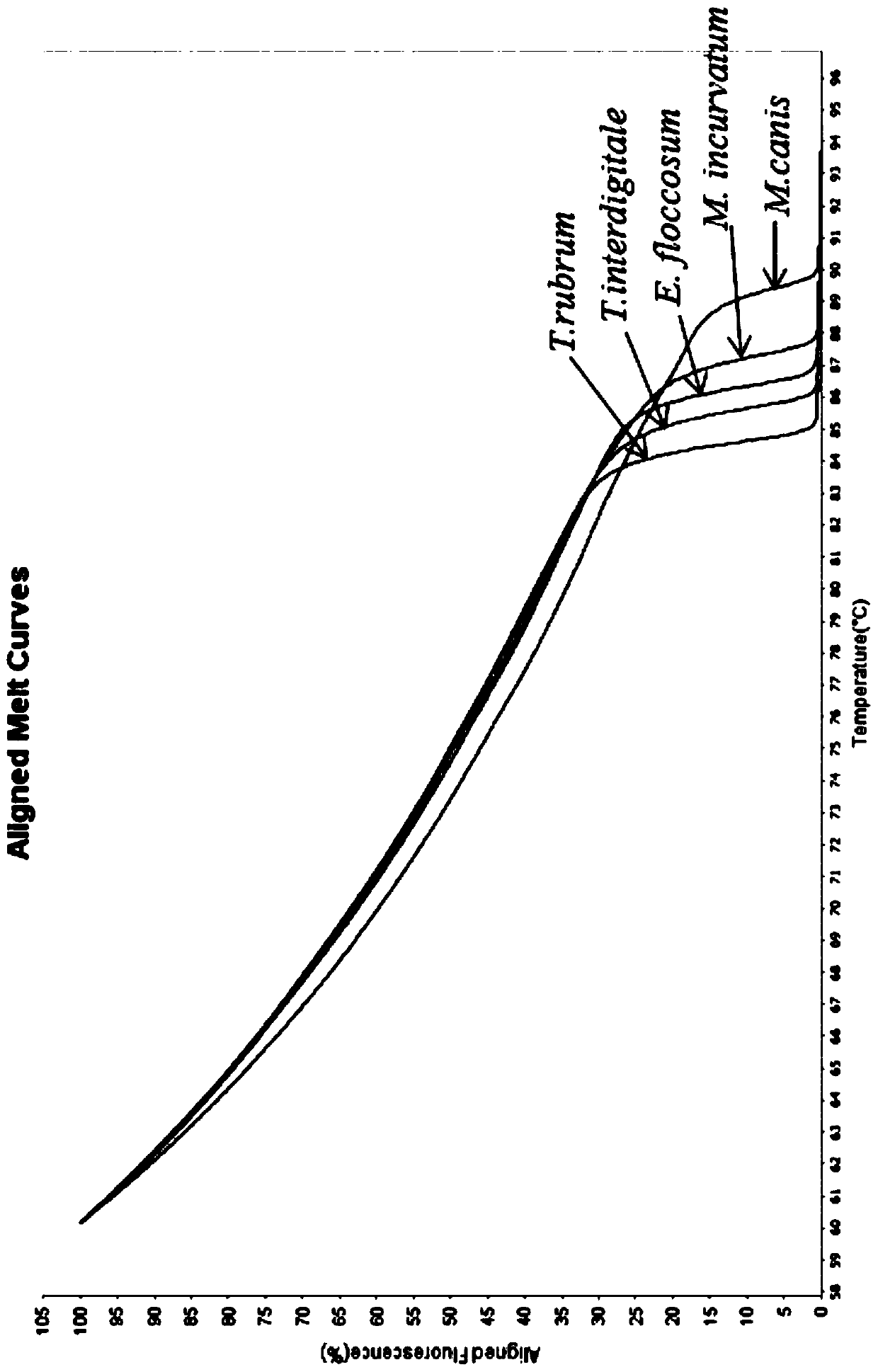Method for identifying five dermatophytes by utilizing high-resolution melting curve
A high-resolution melting, dermatophyte technology, applied in microorganism-based methods, biochemical equipment and methods, and microbial determination/inspection, etc. It can reduce the cost of experimental detection, low cost and simple operation.
- Summary
- Abstract
- Description
- Claims
- Application Information
AI Technical Summary
Problems solved by technology
Method used
Image
Examples
Embodiment 1
[0041] Embodiment 1 Differentiate the establishment of five kinds of dermatophyte methods and specificity, sensitivity verification
[0042] The present inventors have carefully studied Trichophyton rubrum (T. rubrum), Trichophyton interdigitale (T. interdigitale), Epidermophyton floccosum (E. floccosum), Microsporum canis (M. canis) and Microsporum incurvatum. The genome sequences of five dermatophytes were searched for differential target sequences in the CHS sequence. Through careful design and screening, a pair of specific primers were designed. The nucleotide sequence is shown in SEQ ID NO.1-2. Using this The primers can specifically identify the above five dermatophytes by HRM technique. The design of this primer cannot be automatically obtained by computer software. It is necessary to select the target sequence fragment and length based on rich experience, and calculate the Tm value according to the following formula while considering the GC content of the sequence. Af...
Embodiment 2
[0060] Embodiment 2 Application of the inventive method
[0061] 1. Select 100 samples of patients with dermatophytosis who went to see a doctor in the dermatology department of hospitals in 10 different provinces and cities in the country, and use potato dextrose agar base (PDA) containing 0.5% chloramphenicol to separate under constant temperature conditions of 28°C Culture, and identify culture-positive specimens.
[0062] 2. The genomic DNA of the fungal sample to be tested was extracted by the rough extraction method, and the subsequent identification method was carried out with reference to the operation method of Example 1. ABI software was used to analyze the results, and the CHS differences of different dermatophytes were displayed based on the curve offset and curve shape changes through the standard curve. The identification results are shown in Table 2 below.
[0063] Table 2
[0064]
[0065]
[0066] For the samples for which the corresponding dermatophy...
PUM
 Login to View More
Login to View More Abstract
Description
Claims
Application Information
 Login to View More
Login to View More - R&D
- Intellectual Property
- Life Sciences
- Materials
- Tech Scout
- Unparalleled Data Quality
- Higher Quality Content
- 60% Fewer Hallucinations
Browse by: Latest US Patents, China's latest patents, Technical Efficacy Thesaurus, Application Domain, Technology Topic, Popular Technical Reports.
© 2025 PatSnap. All rights reserved.Legal|Privacy policy|Modern Slavery Act Transparency Statement|Sitemap|About US| Contact US: help@patsnap.com



